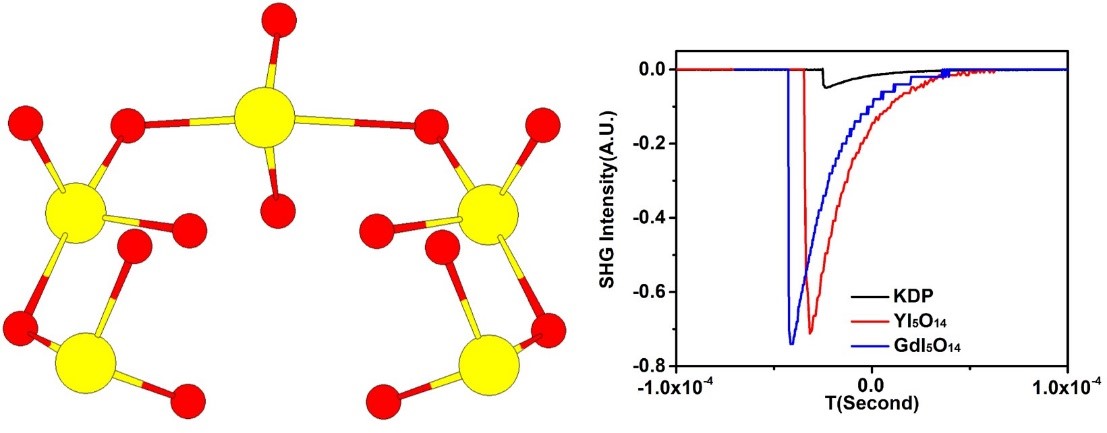
Metal iodates have long been the research focus because they are valuable candidates as second harmonic generation (SHG) materials. It has been reported that the condensation of iodate units into polyiodate as SHG-active group is an effective approach for exploring novel SHG materials.
In a study published in Angewandte Chemie, a research group led by Prof. MAO Jianggao from the Fujian Institute of Research on the Structure of Matter (FJIRSM) of the Chinese Academy of Sciences proposed that REI5O14 (RE = Y and Gd) were promising SHG materials featuring semi-circle shaped I5O143- polyiodate anion. They were obtained via the hydrothermal reactions of RE2O3 and H5IO6 in H3PO4 (≥85 wt. % in H2O).
Researchers found that each brand-new I5O14 pentamer was composed of three IO4 and two IO3 units via corner-sharing was arranged properly, resulting in very strong SHG response (14 × and 15 × KH2PO4(KDP) for Y and Gd compounds).
Theoretical calculations showed that I5O14 pentamer were the mainly SHG-contributed amount (91.28% for YI5O14 and 92.62% for GdI5O14). Meanwhile, REI5O14 (RE = Y and Gd) were widely transparent from visible to mid-infrared spectral region.
They revealed that hydrothermal reaction under phosphoric acid medium facilitated the formation of polyiodate anion, probably because the fact that the consistency of reaction media was strengthened by H3PO4.
This study provides a facile and effective approach for exploring new SHG materials based on metal iodates.

I5O14 pentamer and oscilloscope traces of the SHG signals (Image by Prof. MAO’s group)

86-10-68597521 (day)
86-10-68597289 (night)

52 Sanlihe Rd., Xicheng District,
Beijing, China (100864)

